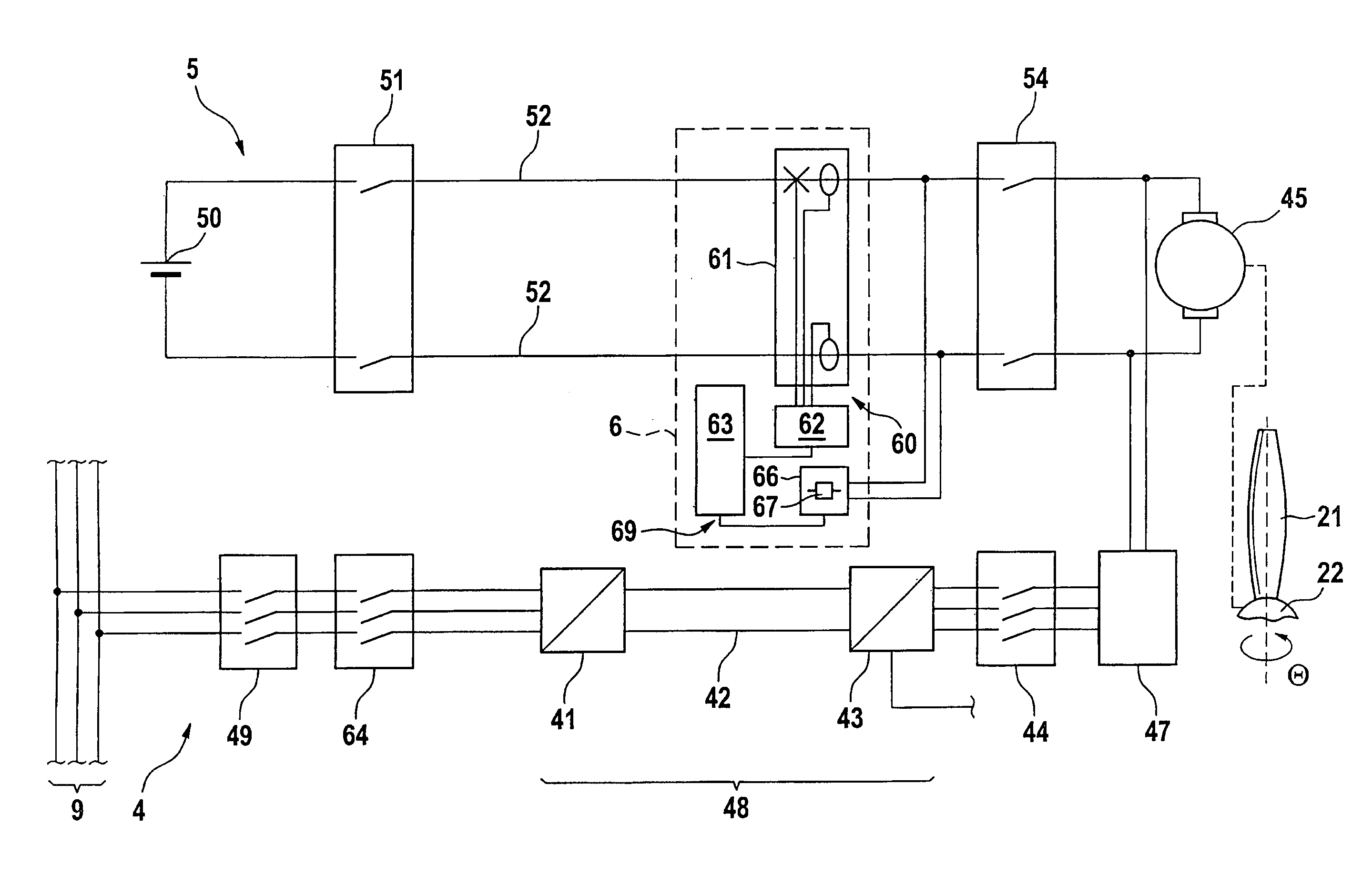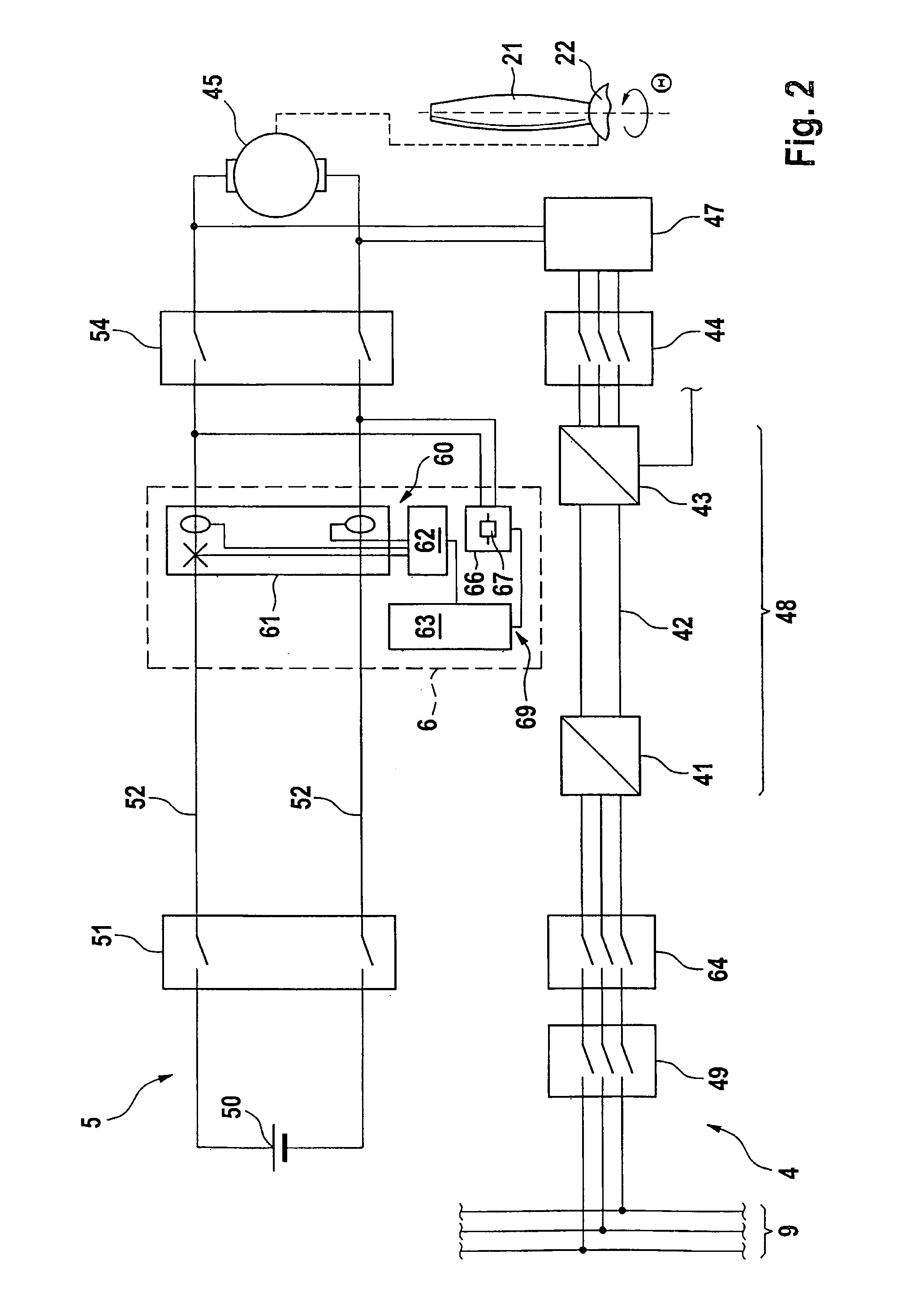Energy supply for a blade adjustment device pertaining to a wind energy installation
a technology of energy supply and adjustment device, which is applied in the direction of emergency power supply arrangement, electric generator control, machines/engines, etc., can solve the problems of limited achieve the effect of increasing the voltage in the emergency circuit, dissipating excessive electric power, and improving system characteristics
- Summary
- Abstract
- Description
- Claims
- Application Information
AI Technical Summary
Benefits of technology
Problems solved by technology
Method used
Image
Examples
Embodiment Construction
[0024]A wind installation denoted as a whole by the reference numeral 1 comprises a tower 10 with a pod 11 which is arranged at its uppermost end in an azimuth plane such that it can move rotationally. On one front end of the pod 11, a rotor 2 is arranged rotatably via a rotor shaft 20. The rotor 2 comprises a plurality of (two in the illustrated example) rotor blades 21. A rotor blade hub 22 connects the propeller blades 21 to the rotor shaft 20. The rotor shaft 20 drives a generator 14 arranged in the pod 11 in order to generate electric energy. The electric energy is guided to a converter 14 and output to an electric supply system 9 via a three-phase line (only one phase is illustrated) 15 and a transformer 16. Furthermore, a control device 18 for the wind energy installation 1 is also arranged in the pod 11. Said control device serves in a manner known per se for the operational control of the wind energy installation.
[0025]The rotor blades 21 are arranged on the hub 22 such tha...
PUM
 Login to View More
Login to View More Abstract
Description
Claims
Application Information
 Login to View More
Login to View More - R&D
- Intellectual Property
- Life Sciences
- Materials
- Tech Scout
- Unparalleled Data Quality
- Higher Quality Content
- 60% Fewer Hallucinations
Browse by: Latest US Patents, China's latest patents, Technical Efficacy Thesaurus, Application Domain, Technology Topic, Popular Technical Reports.
© 2025 PatSnap. All rights reserved.Legal|Privacy policy|Modern Slavery Act Transparency Statement|Sitemap|About US| Contact US: help@patsnap.com



